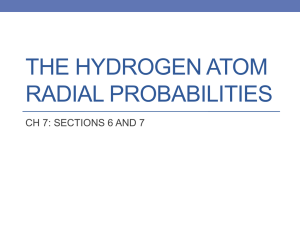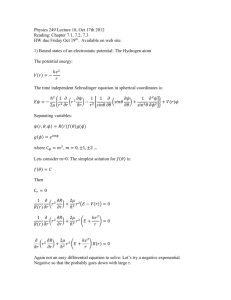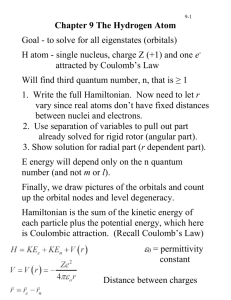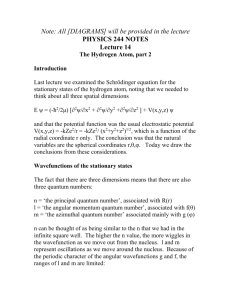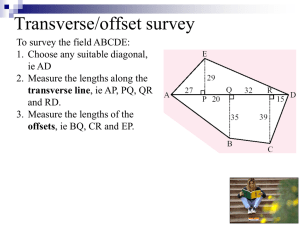Physics 535 lectures notes: 1 * Sep 4th 2007
advertisement
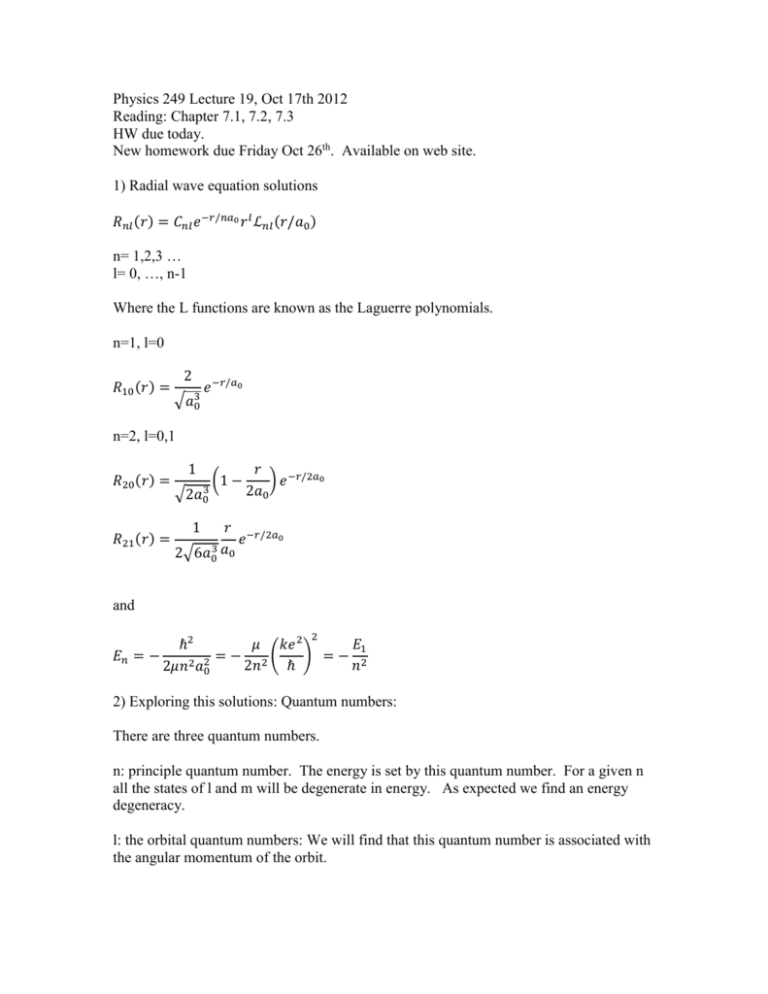
Physics 249 Lecture 19, Oct 17th 2012 Reading: Chapter 7.1, 7.2, 7.3 HW due today. New homework due Friday Oct 26th. Available on web site. 1) Radial wave equation solutions 𝑅𝑛𝑙 (𝑟) = 𝐶𝑛𝑙 𝑒 −𝑟/𝑛𝑎0 𝑟 𝑙 ℒ𝑛𝑙 (𝑟/𝑎0 ) n= 1,2,3 … l= 0, …, n-1 Where the L functions are known as the Laguerre polynomials. n=1, l=0 𝑅10 (𝑟) = 2 √𝑎03 𝑒 −𝑟/𝑎0 n=2, l=0,1 𝑅20 (𝑟) = 𝑅21 (𝑟) = 1 √2𝑎03 (1 − 𝑟 ) 𝑒 −𝑟/2𝑎0 2𝑎0 1 𝑟 −𝑟/2𝑎 0 𝑒 3 𝑎0 2√6𝑎0 and 2 ℏ2 𝜇 𝑘𝑒 2 𝐸1 𝐸𝑛 = − = − ( ) =− 2 2 2 2 2𝑛 ℏ 𝑛 2𝜇𝑛 𝑎0 2) Exploring this solutions: Quantum numbers: There are three quantum numbers. n: principle quantum number. The energy is set by this quantum number. For a given n all the states of l and m will be degenerate in energy. As expected we find an energy degeneracy. l: the orbital quantum numbers: We will find that this quantum number is associated with the angular momentum of the orbit. m: the magnetic quantum number: We will find that the projection of the angular momentum on the z axis is associated with this quantum number. 3) Radial distributions. The radial distributions are easiest to understand in case where l=m=0. In those cases the probability distribution is spherically symmetric. These cases are the so-called s orbitals. Though since the angular portion is separated we can also look at the radial distributions in the cases where l>0. The probability distributions as a function of the radial coordinate are an exponential or an exponential times a polynomial distribution. A distance scale set by the Bohr radius characterizes them. They can be understood by graphing the probability distribution. There are two interesting distributions. a)The wave function squared. This will give the probability in any infinitesimal volume. b) The Radial probability distribution. This gives the probability in any infinitesimal radial unit. It accounts for the fact that you have to integrate over a spherical shell or area 4𝜋𝑟 2 which increases the probability as a function of radius compared to case a). Note that the location of the volume with the maximum probability is the origin. We can further quantify by calculating the following quantities for the radial probability distribution. a) Maxima: The ground state wave function has one maxima at the Bohr radius. Higher energy states with l=0 have n maximum and in general there are n-l maxima. b) Minima: There are also minima and in fact radii with zero radial probability density. c) Expectation values for <r> to understand the average radius. Note that since r is positive this actually tells us about the standard deviation along an axis. For higher n the largest maxima and expectation values will be pushed out to higher values. Graphically: 4
